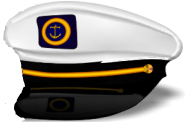21 cent. Sеаmaпsнiр
Chapter 1 General Cargo Ship Types
Chapter 2 Tankers
Chapter 3 Other Ship Types
Chapter 4 Offshore Marine Operations
Chapter 5 Machinery and Equipment
Chapter 6 Pilotage
Chapter 7 Shiphandling
Chapter 8 Anchorwork
Chapter 9 Tugs and Towing
Chapter 10 Mooring Operations and Safety
Chapter 11 Waterways, River Transits and Canals
Chapter 12 Preparing a Ship for Ice
Chapter 13 Non-Standard Operations
Chapter 14 Stood by New Builds
Chapter 15 Paints and Coatings
Chapter 16 Drydock
Chapter 17 Lay-up of Ships
Chapter 18 Heavy Weather
Chapter 19 Participating in SAR
Chapter 20 Oil Spills/Pollution
Chapter 21 Practical Aspects of Salvage
Chapter 22 Main Conventions and Codes
Chapter 23 Recent Regulations
Chapter 24 Certification and Endorsements
Chapter 25 Business and Chartering
Chapter 26 Conflict and Issues Affecting Shipping
Chapter 27 Fines for Ships and Ships’ Staff
Chapter 28 In Port and Alongside
Chapter 29 Shipboard Inspections
Chapter 30 Surveys and Classification
Chapter 31 Systems of Work
Chapter 32 Permit to Work
Chapter 33 Enclosed Space Entry
Chapter 34 Health
Chapter 35 Housekeeping on Board
Chapter 36 Ships’ Equipment and Maintenance
Chapter 37 Lifeboat Release Mechanisms
Chapter 38 Fire Fighting
Chapter 39 Shipboard Drills
Chapter 40 Accident Investigation
Chapter 41 Stability
Chapter 42 Damage Stability
Chapter 43 Hull Monitoring and Inspection
Chapter 44 Energy Efficiency
Chapter 45 Ship Recycling
Chapter 46 Traditional Seamanship
Chapter 47 Wires, Ropes, Chains, Shackles & Slings
Chapter 48 Cranes and Lifting Equipment
Chapter 49 Checklists
Chapter 50 Tsunamis and Marine Phenomena
Chapter 2 Tankers
Chapter 3 Other Ship Types
Chapter 4 Offshore Marine Operations
Chapter 5 Machinery and Equipment
Chapter 6 Pilotage
Chapter 7 Shiphandling
Chapter 8 Anchorwork
Chapter 9 Tugs and Towing
Chapter 10 Mooring Operations and Safety
Chapter 11 Waterways, River Transits and Canals
Chapter 12 Preparing a Ship for Ice
Chapter 13 Non-Standard Operations
Chapter 14 Stood by New Builds
Chapter 15 Paints and Coatings
Chapter 16 Drydock
Chapter 17 Lay-up of Ships
Chapter 18 Heavy Weather
Chapter 19 Participating in SAR
Chapter 20 Oil Spills/Pollution
Chapter 21 Practical Aspects of Salvage
Chapter 22 Main Conventions and Codes
Chapter 23 Recent Regulations
Chapter 24 Certification and Endorsements
Chapter 25 Business and Chartering
Chapter 26 Conflict and Issues Affecting Shipping
Chapter 27 Fines for Ships and Ships’ Staff
Chapter 28 In Port and Alongside
Chapter 29 Shipboard Inspections
Chapter 30 Surveys and Classification
Chapter 31 Systems of Work
Chapter 32 Permit to Work
Chapter 33 Enclosed Space Entry
Chapter 34 Health
Chapter 35 Housekeeping on Board
Chapter 36 Ships’ Equipment and Maintenance
Chapter 37 Lifeboat Release Mechanisms
Chapter 38 Fire Fighting
Chapter 39 Shipboard Drills
Chapter 40 Accident Investigation
Chapter 41 Stability
Chapter 42 Damage Stability
Chapter 43 Hull Monitoring and Inspection
Chapter 44 Energy Efficiency
Chapter 45 Ship Recycling
Chapter 46 Traditional Seamanship
Chapter 47 Wires, Ropes, Chains, Shackles & Slings
Chapter 48 Cranes and Lifting Equipment
Chapter 49 Checklists
Chapter 50 Tsunamis and Marine Phenomena
